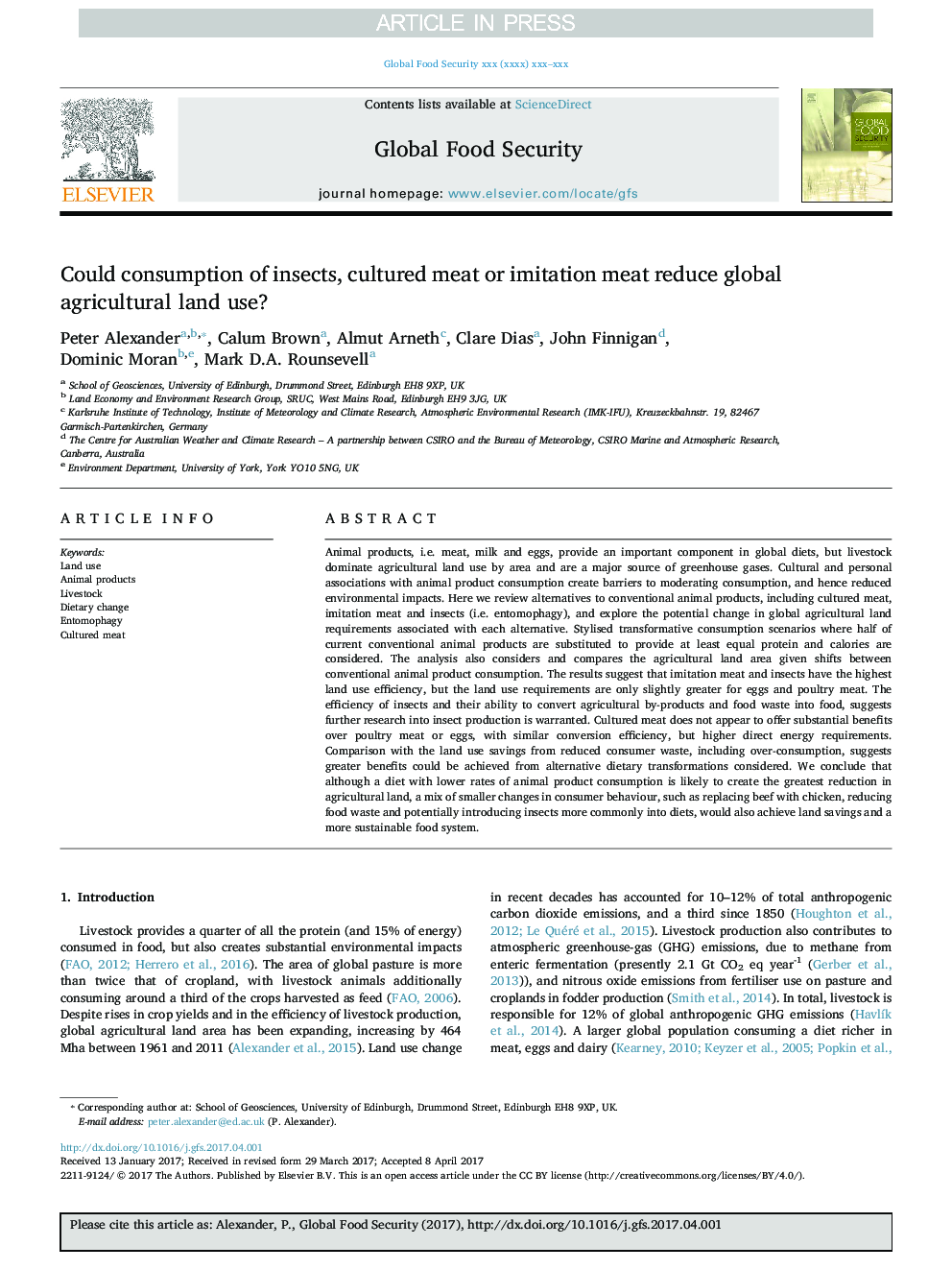| Article ID | Journal | Published Year | Pages | File Type |
|---|---|---|---|---|
| 7454565 | Global Food Security | 2017 | 11 Pages |
Abstract
Animal products, i.e. meat, milk and eggs, provide an important component in global diets, but livestock dominate agricultural land use by area and are a major source of greenhouse gases. Cultural and personal associations with animal product consumption create barriers to moderating consumption, and hence reduced environmental impacts. Here we review alternatives to conventional animal products, including cultured meat, imitation meat and insects (i.e. entomophagy), and explore the potential change in global agricultural land requirements associated with each alternative. Stylised transformative consumption scenarios where half of current conventional animal products are substituted to provide at least equal protein and calories are considered. The analysis also considers and compares the agricultural land area given shifts between conventional animal product consumption. The results suggest that imitation meat and insects have the highest land use efficiency, but the land use requirements are only slightly greater for eggs and poultry meat. The efficiency of insects and their ability to convert agricultural by-products and food waste into food, suggests further research into insect production is warranted. Cultured meat does not appear to offer substantial benefits over poultry meat or eggs, with similar conversion efficiency, but higher direct energy requirements. Comparison with the land use savings from reduced consumer waste, including over-consumption, suggests greater benefits could be achieved from alternative dietary transformations considered. We conclude that although a diet with lower rates of animal product consumption is likely to create the greatest reduction in agricultural land, a mix of smaller changes in consumer behaviour, such as replacing beef with chicken, reducing food waste and potentially introducing insects more commonly into diets, would also achieve land savings and a more sustainable food system.
Related Topics
Life Sciences
Agricultural and Biological Sciences
Agronomy and Crop Science
Authors
Peter Alexander, Calum Brown, Almut Arneth, Clare Dias, John Finnigan, Dominic Moran, Mark D.A. Rounsevell,
